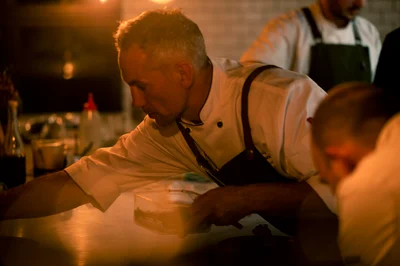Cooking the perfect steak

While what we define as the perfect steak can vary from person to person and is influenced by the cut of meat, Beef + Lamb New Zealand and Alliance Ambassador Chef Darren Wright says there are some basic guidelines to help achieve a tender and tasty steak.
Wright says the first step is to get your steak out of the fridge in advance and to season your cut right before cooking.
"I would recommend cooking from room temperature or ambient temperature.
"Season the steak just before it goes in the pan, and put it seasoned side down."
Seasoning too early will draw moisture out of the meat, causing it to be tough and leathery.
Wright doesn't recommend olive oil for cooking, but an oil with a high burn point, such as grape seed oil.
Steak should go onto a hot barbecue or pre-heated pan, and Wright suggests listening to the sizzle of the steak in the pan as a guide to temperature.
"You need to listen to the sizzling – the harder it's sizzling, the higher the temperature.
"You want to create caramelisation on the outside to create a bit of a crust before turning the steak over and doing the same on the other side."
Once turning, Wright recommends adding more oil and a touch of butter and nappe (coat) the butter and oil over the top of the meat.
Steak should ideally only be turned once, and thickness determines how long a steak needs to be in the pan or whether it needs to be finished in the oven.
"If it's a really thick piece of meat, you may need to finish it in the oven to cook it to your desired outcome."
Controlling the temperature is essential.
Too cool a pan or barbeque means the steak will not "seal", resulting in a stewed steak that is potentially tough.
Too aggressively hot can result in steak that is burned on the outside but not cooked in the middle.
Wright says it's best to cook meat just slightly less than you like, as the meat will continue to cook slightly as it rests.
"Resting is really important.
"When it comes off the barbecue or pan, meat is tense because it has been on a 180 or 250-degree heat.
"When you rest meat, it has time to rest and relax, and it's suppler and a lot softer, and the eating quality will always be better."
When it comes to barbequing, Wright uses a Weber.
He prefers charcoal over gas when circumstances allow.
"In a perfect world, I would cook over charcoal because I like the flavour.
“It adds another dimension."
Whether you are cranking up the barbeque on these longer days or pan-frying up a storm in the kitchen, cooking the perfect steak is more of a culinary art form than most of us realise.
"It's actually hard to do it really well.
You actually have to have quite a bit of knowledge around the piece of meat and the outcomes you want," Wright said.
by Claire Inkson

